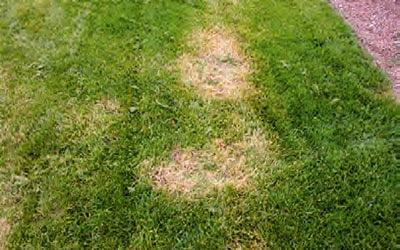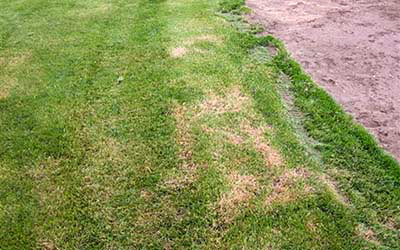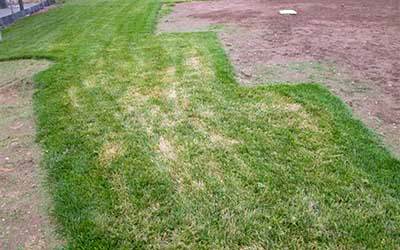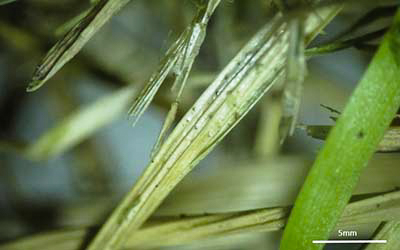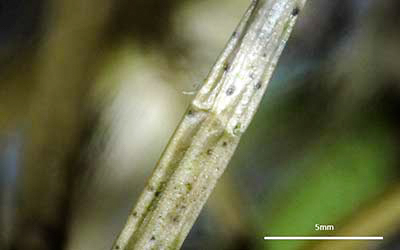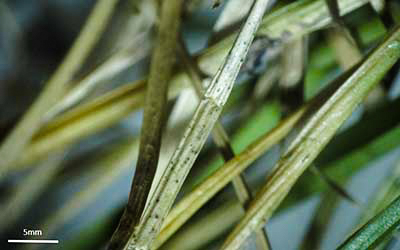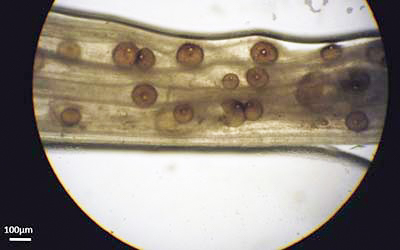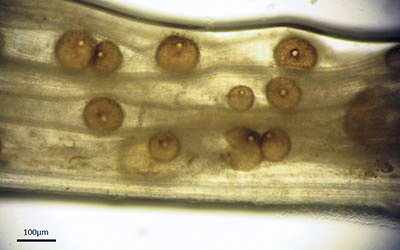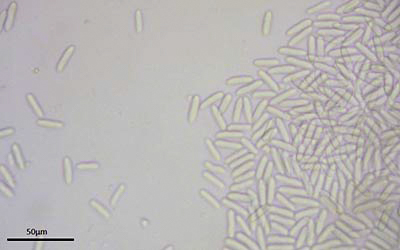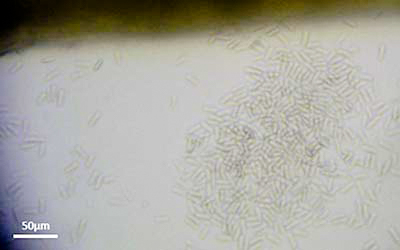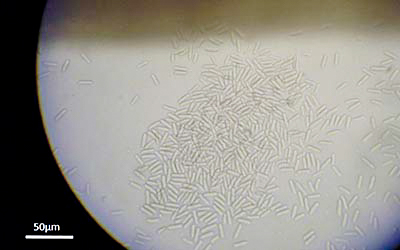Ascochyta spp.
Hosts
Tall fescue Kentucky bluegrass
Disease description:
Ascochyta blight is a minor, but aesthetically obvious, disease that occurs in warm periods in late spring or early summer after periods of heavy rainfall or high humidity. Many details of the disease cycle are unknown, but long periods of leaf wetness seem to play a distinct role. The disease occurs erratically and may be observed on a highly maintained lawn (particularly with an irrigation system) while an adjacent, lower maintained yard may be undamaged. Symptoms include leaf chlorosis and blighting that generally girdles the leaf from the tip down and results in straw-colored, irregular patches of varying sizes. Pycnidia, which appear as small brown or black freckles, can be observed on infected leaves. These structures produce conidia, which spread the disease.
Control
Although the disease appears devastating, the pathogen infects only the leaves and does not affect the crown tissue. After conducive conditions pass, affected turf normally recovers quickly and no fungicide is warranted. Avoiding excessive nitrogen applications in the spring and regularly aerifying turf areas may reduce disease severity.
Images
